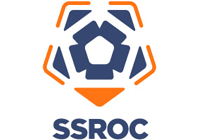An analysis of the jobs held by the female resident population in SSROC region in 2021 shows the three most popular industry sectors were:
- Health Care and Social Assistance (78,536 females or 18.8%)
- Education and Training (51,859 females or 12.4%)
- Professional, Scientific and Technical Services (51,514 females or 12.4%)
In combination, these three industries employed 181,909 females in total or 43.6% of the total employed female resident population.
In comparison, Greater Sydney employed 21.0% in Health Care and Social Assistance; 12.6% in Education and Training; and 10.1% in Professional, Scientific and Technical Services.
The major differences between the jobs held by the female population of SSROC region and Greater Sydney were:
- A larger percentage of females employed in professional, scientific and technical services (12.4% compared to 10.1%)
- A smaller percentage of females employed in health care and social assistance (18.8% compared to 21.0%)
